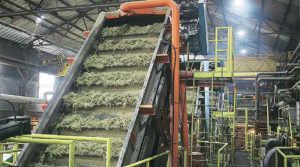The current sugar production in Bangladesh is only 5% of the total demand. In contrast, jaggery production, mainly sugarcane, fulfills approximately 20% of demand, and the remaining 75% comes from importation. The fundamental causes of lower sugar production in the industry include less sugarcane supply in the factory, growing demand for Carew and liberalization of import, poor sugar recovery, etc. Against such a backdrop, it is important to shed light on why Bangladesh’s Sugar Industry faces loss.
Firstly, the liberalization of sugar imports has exposed the struggling state-owned sugar mills to unequal competition, putting them on the verge of bankruptcy, with six of the 15 public mills already closed. Bangladesh’s sugar mills are uncompetitive due to high production costs, and the removal of prohibitions on the import of inexpensive sugar has exacerbated their situation, making their demise inevitable. While a handful of private enterprises gained from the liberalization, thousands of sugar cane growers, sugar mill employees, and others who have based their lives on sugar mills have lost or will lose their jobs.
The liberalization has brought some clear benefits for importers, such as the easing of import taxes, progressively pushing the local sugar industry to the brink of extinction, while successive administrations have done nothing to safeguard or restore the business. The importers were also required to help the government keep the market stable, but instead, they held the local mills under stress by selling sugar at a low price.

Making the highly inefficient, corruption-ridden local sugar industry compete with the highly efficient and skilled international sugar industries is like David facing the Goliath.
Since the sugar import was liberalized in 2002, the country’s sugar cane cultivation acreage fell by 45% to slightly over 48,000 hectares in 2019 from more than 88,000 hectares in 2002, leading to over 66% fall in production, shows the Bangladesh Sugar and Food Industries Corporation’s (BSFIC) data.
In 2019, the amount of sugar produced was about 69,000 tonnes, whereas it was 2,04000 tonnes in 2002. Thus, the production of sugar faced a sharp decline over the years.
Secondly, In the 18 years after sugar imports were liberalized, the BSFIC had only made a profit once, in 2005-06, when sugar mills had a decent production plus a significant import. State-owned sugar mills profited in ten of the first twelve years following Bangladesh’s independence.
However, the BSFIC only made a profit twice in the 17 years after 1984-85. The local sugar industry’s contribution to meeting the country’s demand plummeted to less than 4% in 2019 from about 20% in 2002, when Bangladesh approved import liberalization. Following the deregulation, the difference between the production cost and the market price of sugar increased abnormally.
After Bangladesh’s independence, in 51 years, the average sugarcane cultivation has been low. The farmers are reluctant to cultivate sugarcane as they find it difficult to generate a steady profit from the crops. The statistics show the production stood at 67.42 lakh tones in the FY of 2000-01, but it faces a decline to 33.33 lakh tones in FY 2020-21, according to the Economic Review of Bangladesh 2022.
Sugarcane farmers are also undergoing backlashes ranging from low prices for sugar, lack of resources and fertilizers, high cost of inputs, and limited extension services. As sugar output in the country has decreased owing to a lack of sugarcane, the government has resorted to importing sugar to ensure that the distilleries operate on even more days each year.
For a long time, private sugar mills have imported sugar from Latin America to supply the country’s high sugar demand. The company’s sugar segment has lost around BDT 70 crore. The loss was created by failing to meet the sugar production objective and selling sugar at a lower price despite the high production costs.
Fourthly, alcohol and various spirits are made from sugarcane juice molasses, a byproduct of sugar manufacturing. After extracting sugarcane juice for sugar manufacturing, molasses, bagasse, and press mud are discovered. These three byproducts are used to make a variety of items. Molasses is the primary component in the creation of liquor or alcohol. Alcohol is produced by fermenting yeast with molasses. According to Authority concerned, among the 15 sugar mills operated under the BSFIC, only Carew and Co is currently making a profit. Except for Carew & Co, 14 sugar mills lost roughly BDT 8,000 crore in the 2019-20 fiscal year.
Due to ongoing losses, the government has discontinued sugarcane threshing in six mills while keeping the remaining nine operational. One of the classic examples is the state-owned North Bengal Sugar Mills at Lalpur in Natore wants to set up a distillery to transform the loss-making company into a profitable one by capitalizing on the growing demand for liquor in the country.
Luckily, the demand for sugar in the local markets has been increasing due to increased tea consumption. BSRI has been researching tropical sugar beets to bring them into the country. Sugarcane planting in river basins, plain land, hilly places, and salty areas can significantly enhance sugarcane productivity. Furthermore, if the BSRI-recommended technologies are implemented correctly, sugarcane productivity, and hence sugar and jaggery production, will undoubtedly grow.